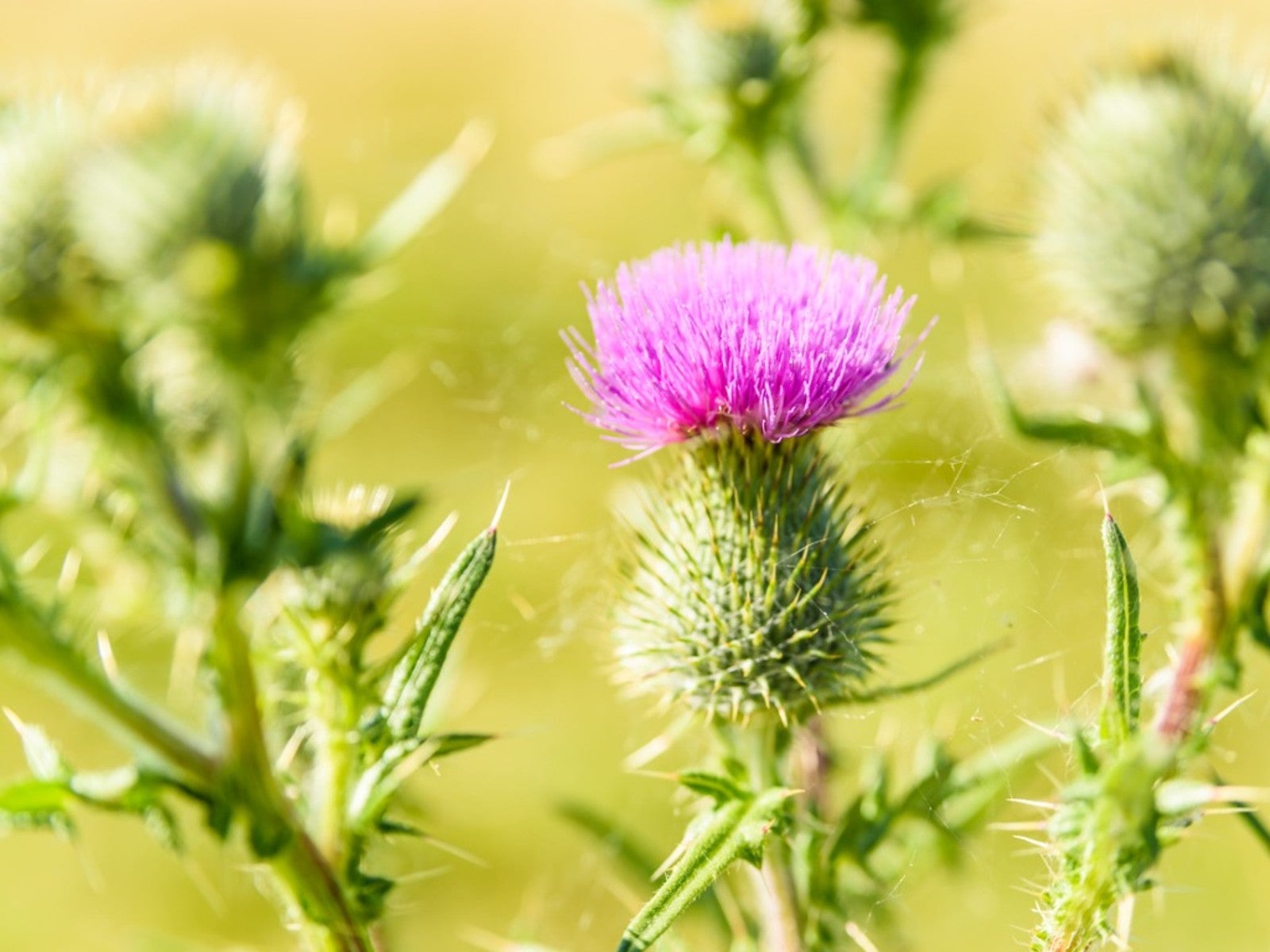Identify Common Types Of Thistle Weeds


Thistle type weeds are every gardener's bane. From their prickly stems to their deep tap roots, thistle is one of the most annoying weeds to eradicate. What’s more, some species of these prolific self-seeders are invasive and can quickly overtake an area. Which can leave the unwary gardener in a thorny situation.
Facts About Thistle
Thistle is an adaptive plant which can grow almost anywhere from roadsides and pastures to flowerbeds and lawns. Depending upon the species, thistle can be biennials which form low-growing rosettes their first year. After flowering their second year, biennials die. Other types of thistles are perennials. They grow and spread for many years.
Worldwide, approximately 200 species of thistle have been identified, many of which are native to North America. While gardeners might not appreciate these wildflowers in their well-manicured landscape, native species are a key part of the ecosystem. They provide food to birds, butterflies, and pollinators.
Invasive varieties of thistle originated in Europe and Asia and were likely introduced when importing seeds. Lack of disease and insect pests has allowed these noxious species to spread throughout North America. As these introduced species threaten native flora and disrupt the ecosystem, it's prudent to eliminate them in open areas as well as in the home garden.
Identifying the Most Common Non-Native Thistle Varieties
Proper identification is key to eradicating invasive and noxious species of thistle. Of the many different types of thistle, these four are considered the most problematic:
- Bull thistle (Cirsium vulgare) – This biennial has deeply-lobed, hairy leaves with prominent spines on both the lobes and terminal end of each leaf. Bull thistle forms a robust, deep green rosette the first year. The second year, the flowering stem can reach 6 feet (2 m.) tall. One of the later blooming species of thistle, gumdrop-shaped purple flowers appear from July through September.
- Canada thistle (Cirsium arvense) – Contrary to what its name suggests, Canada thistle is native to Europe. This perennial species likely arrived on the shores of North America as early as the 1600's. The leaves have wavy lobes with a smooth upper surface. Clusters of small flowers form June through September on stems which can reach 6 feet (2 m.) tall. The flowers can be pink, purple, or white.
- Musk thistle (Carduus nutans) – Sometimes referred to as the nodding thistle, this biennial produces a single, somewhat weighty flowerhead that droops when mature. Bloom time is June through October and the pinkish purple flowers can reach 2 inches (5 cm.) in diameter. The leaves have a wavy lobe shape with a light green midvein.
- Scotch thistle (Onopordum acanthium) – This extremely spiny biennial can grow to heights of 12 feet (4 m.) and form thickets too dense for cattle to penetrate. The broad, oblong, lobed leaves are covered with hair, which gives this noxious weed a greenish gray tint. The 2 inch (5 cm.) purple flowers bloom June through August. Of the various types of thistle weed, Scotch thistle is one of the hardest to eradicate.
Sign up for the Gardening Know How newsletter today and receive a free copy of our e-book "How to Grow Delicious Tomatoes".

Laura Miller has been gardening all her life. Holding a degree in Biology, Nutrition, and Agriculture, Laura's area of expertise is vegetables, herbs, and all things edible. She lives in Ohio.